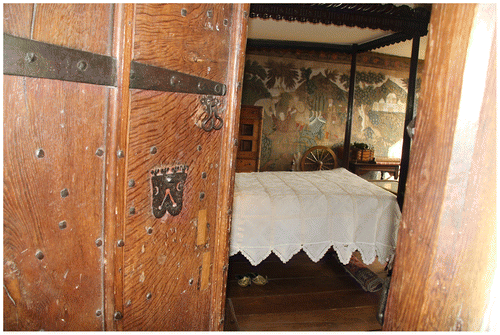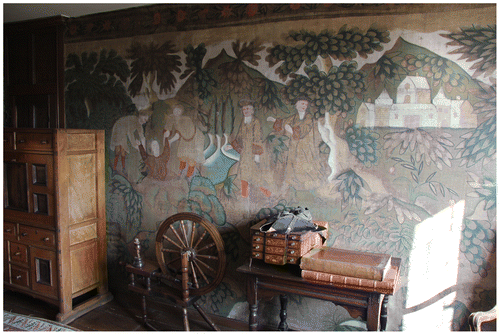Figures & data
Fig. 1. Offcut pieces of border from the painted cloths at Owlpen Manor, Gloucestershire, early eighteenth century. These were removed when the cloths were moved from their original location and adapted for display in a different chamber.

Fig. 2. Looking at an embroidered box, ‘Scenes from the Life of Abraham’, anonymous, English, possibly Miss Bluitt, later Mrs Payne, c. 1665, Ashmolean Museum, University of Oxford, WA 1947.191.315.
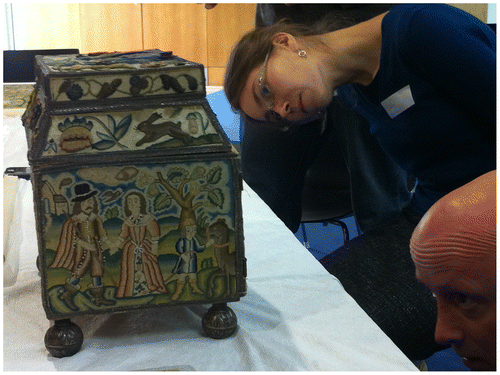
Fig. 3. Embroidered Mermaid (detail), anonymous, British, embroidered picture: ‘The Proclamation of Solomon’, mid-seventeenth century, 35.4 cm x 47.5 cm, Ashmolean Museum, University of Oxford, WA1947.191.313.

Fig. 4. Anonymous, British, embroidered picture: ‘The Temptation of Adam and Eve’, mid-seventeenth century, 57 cm x 58.5 cm, Ashmolean Museum, University of Oxford, WA1947.191.308.
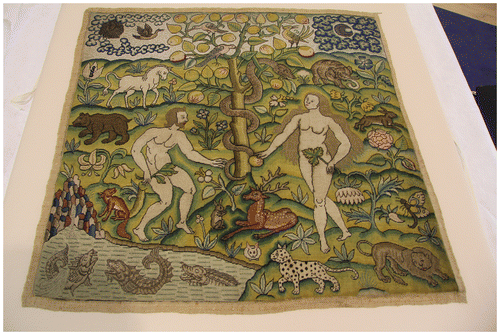
Fig. 5. Replica painted hanging in the hall of Bayleaf Farmhouse (c. 1540), Weald & Downland Open Air Museum, Sussex, as viewed in natural (day)light, July 2014.
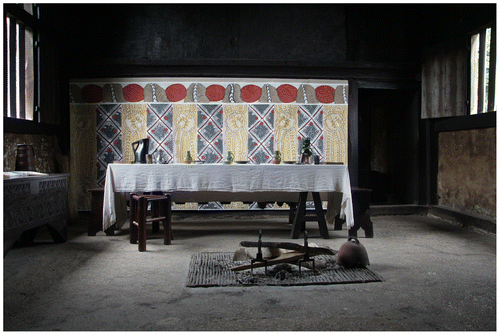
Fig. 6. Replica painted hanging in the hall of Bayleaf Farmhouse (c. 1540), Weald & Downland Open Air Museum, Sussex, as viewed in the evening by fire and candlelight, July 2014.


